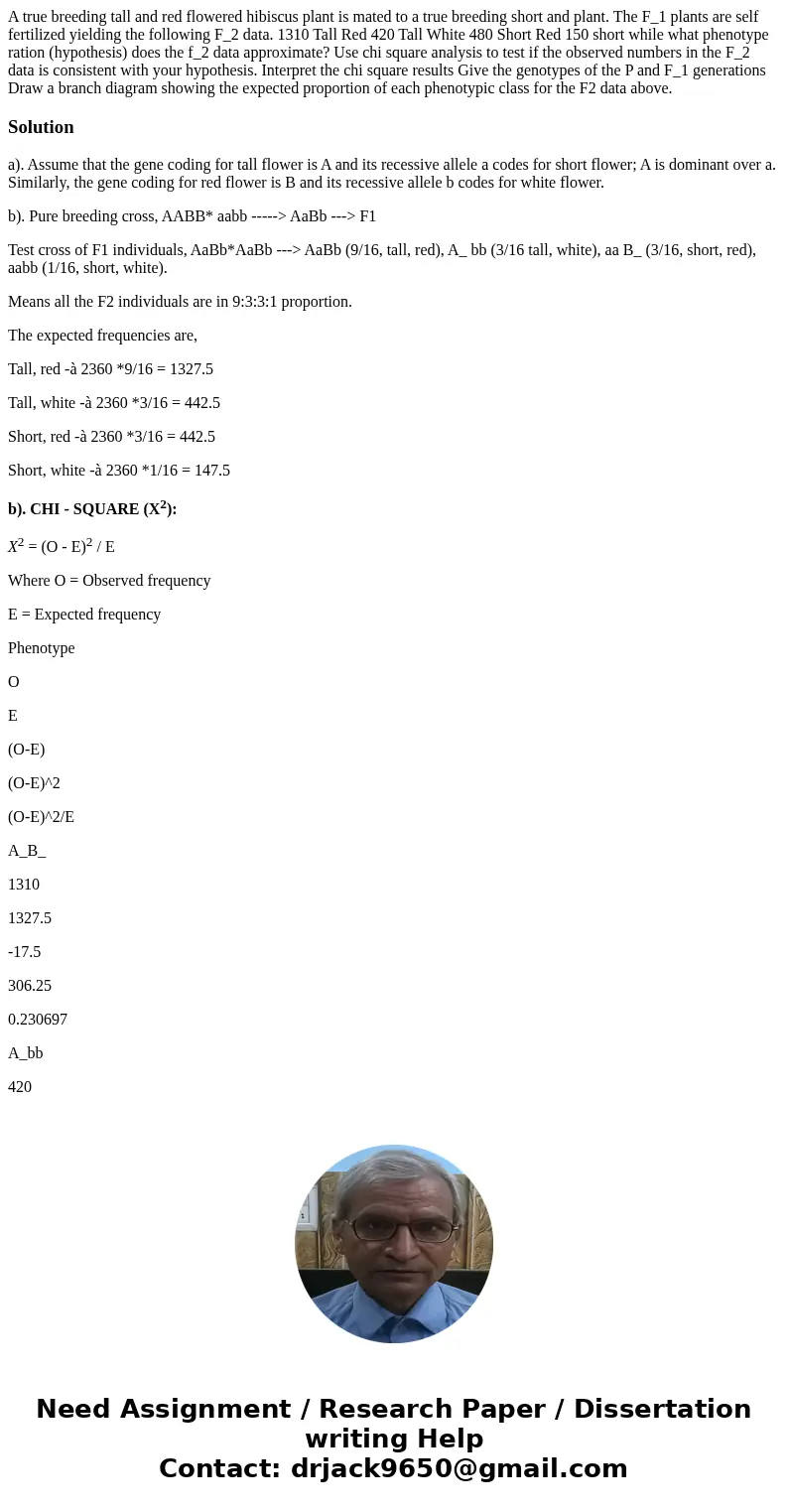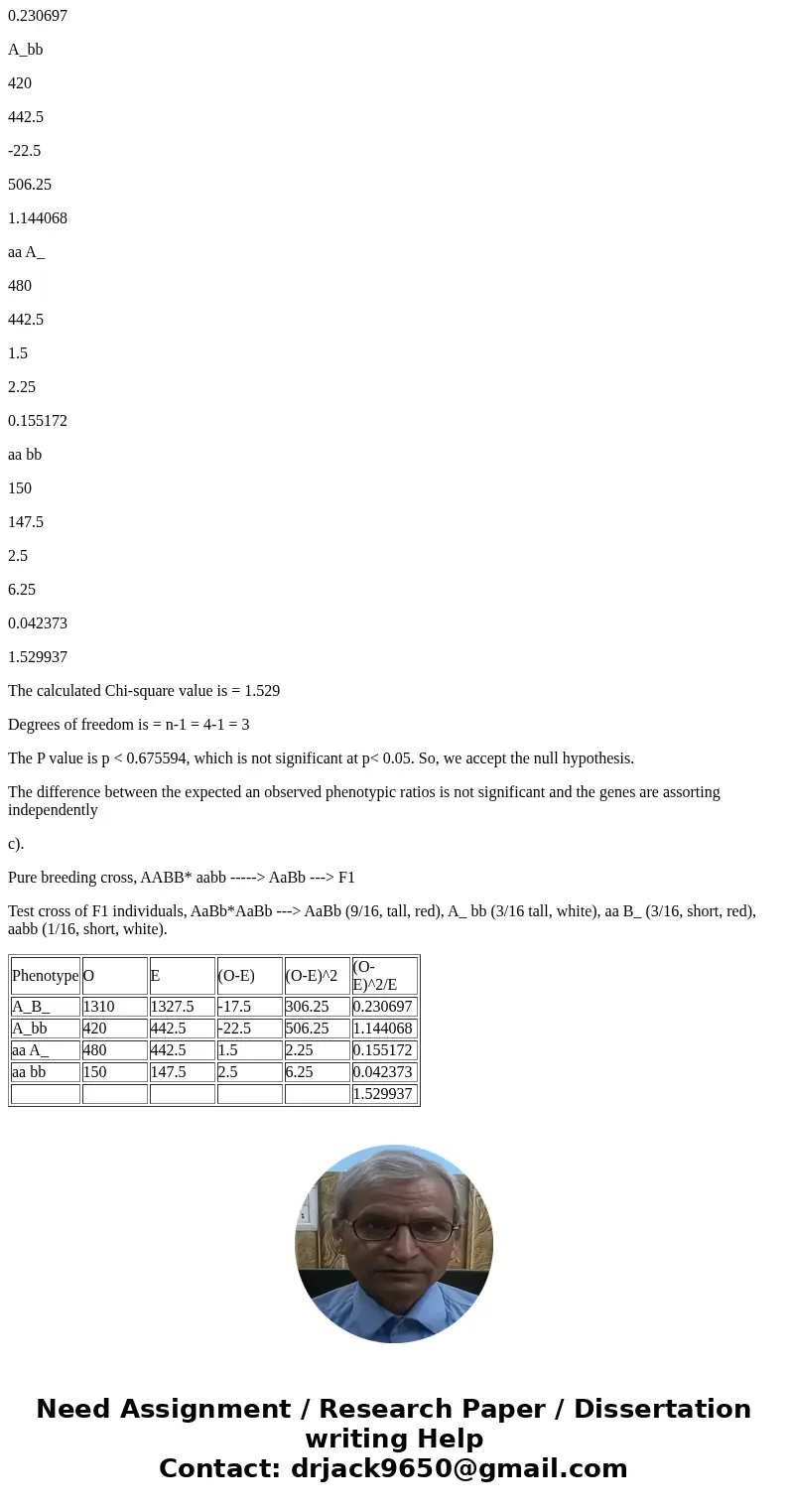A true breeding tall and red flowered hibiscus plant is mate
Solution
a). Assume that the gene coding for tall flower is A and its recessive allele a codes for short flower; A is dominant over a. Similarly, the gene coding for red flower is B and its recessive allele b codes for white flower.
b). Pure breeding cross, AABB* aabb -----> AaBb ---> F1
Test cross of F1 individuals, AaBb*AaBb ---> AaBb (9/16, tall, red), A_ bb (3/16 tall, white), aa B_ (3/16, short, red), aabb (1/16, short, white).
Means all the F2 individuals are in 9:3:3:1 proportion.
The expected frequencies are,
Tall, red -à 2360 *9/16 = 1327.5
Tall, white -à 2360 *3/16 = 442.5
Short, red -à 2360 *3/16 = 442.5
Short, white -à 2360 *1/16 = 147.5
b). CHI - SQUARE (X2):
X2 = (O - E)2 / E
Where O = Observed frequency
E = Expected frequency
Phenotype
O
E
(O-E)
(O-E)^2
(O-E)^2/E
A_B_
1310
1327.5
-17.5
306.25
0.230697
A_bb
420
442.5
-22.5
506.25
1.144068
aa A_
480
442.5
1.5
2.25
0.155172
aa bb
150
147.5
2.5
6.25
0.042373
1.529937
The calculated Chi-square value is = 1.529
Degrees of freedom is = n-1 = 4-1 = 3
The P value is p < 0.675594, which is not significant at p< 0.05. So, we accept the null hypothesis.
The difference between the expected an observed phenotypic ratios is not significant and the genes are assorting independently
c).
Pure breeding cross, AABB* aabb -----> AaBb ---> F1
Test cross of F1 individuals, AaBb*AaBb ---> AaBb (9/16, tall, red), A_ bb (3/16 tall, white), aa B_ (3/16, short, red), aabb (1/16, short, white).
| Phenotype | O | E | (O-E) | (O-E)^2 | (O-E)^2/E |
| A_B_ | 1310 | 1327.5 | -17.5 | 306.25 | 0.230697 |
| A_bb | 420 | 442.5 | -22.5 | 506.25 | 1.144068 |
| aa A_ | 480 | 442.5 | 1.5 | 2.25 | 0.155172 |
| aa bb | 150 | 147.5 | 2.5 | 6.25 | 0.042373 |
| 1.529937 |


 Homework Sourse
Homework Sourse